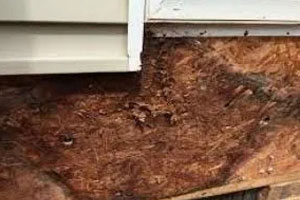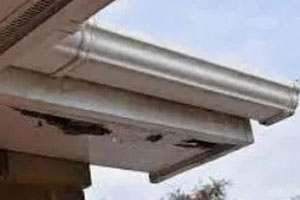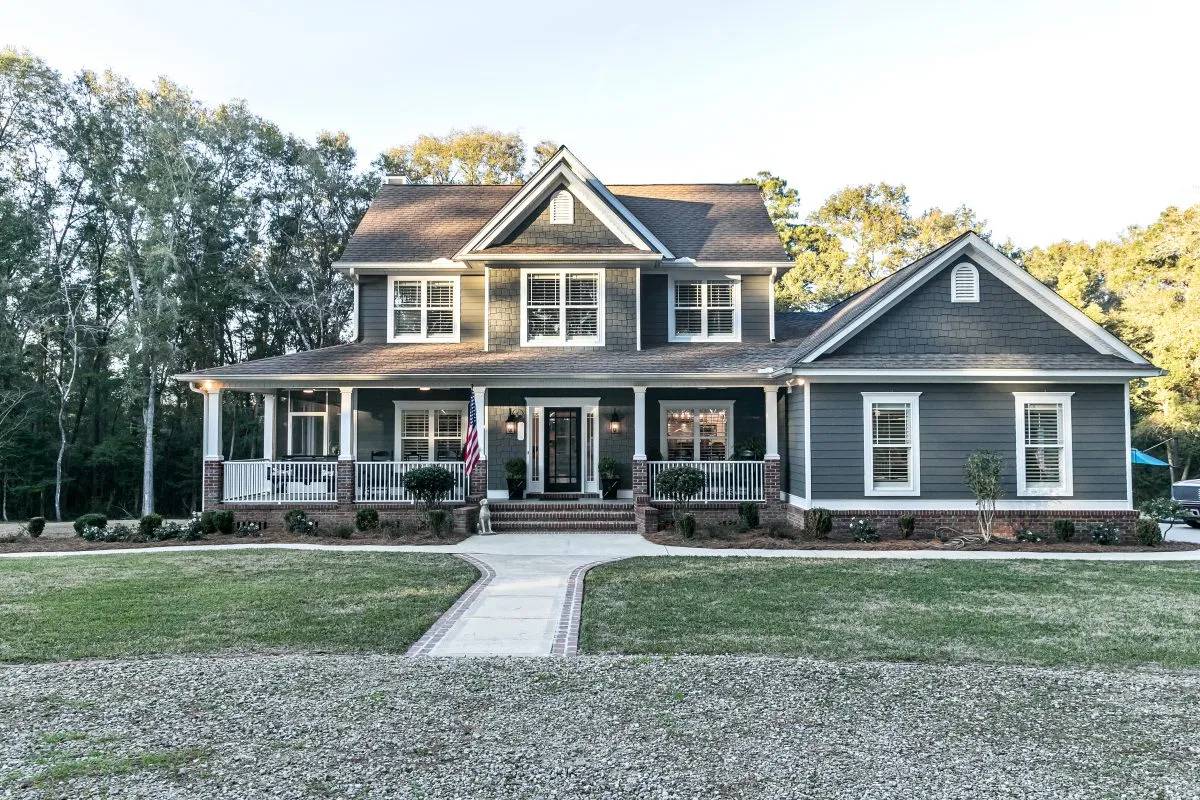Maintaining a beautiful and structurally sound home is a top priority for every homeowner. One common threat that can compromise both the aesthetics and integrity of your home is wood rot.
Whether you’re dealing with exterior siding, interior trim, or any wooden surfaces, understanding wood rot, recognizing its signs, and knowing how to repair it is crucial.
In this blog post, Bordner Home Improvement will cover everything you need to know about wood rot repair, from its causes and types to where it can be found in your home and how to prevent and address it effectively.








What Is Wood Rot?
Wood rot, in the simplest terms, is the deterioration of wood due to fungal growth. It occurs when wood is exposed to moisture over an extended period, providing the ideal conditions for fungi to thrive and break down the wood’s cellulose and lignin components.
If left unattended, wood rot can become a costly issue for the structure of your home.
Types of Wood Rot
There are three types of wood rot that are commonly found in homes. They are white rot, brown rot, and soft rot.
White Rot
The fungi responsible for white rot are quite the experts when it comes to wood degradation. They have a particular affinity for lignin, a crucial component of wood’s structural integrity. What sets them apart is their ability to break down lignin, leaving the cellulose intact, which gives decaying wood that distinct pale, white, or yellowish appearance. This will usually result in a spongy or fibrous texture in the affected wood.
White Rot-causing fungi thrive in temperatures between 65 and 90 degrees Fahrenheit, which conveniently aligns with the typical indoor climate of most homes.
Brown Rot
Brown Rot is commonly referred to as dry rot due to its tendency to give rotted wood a dry appearance. However, it’s crucial not to be misled, as it still requires a moisture content of 20% or higher to initiate growth. This fungus alters the cellulose in wood, leading to wood shrinkage, a dark brown hue, and fragmentation into roughly cube-shaped pieces. This process is technically termed cubical fracture.
Similar to the white variety, brown fungi have a preference for growing in temperatures ranging from 65 to 90 degrees Fahrenheit. The Brown Rot fungi possess the ability to traverse through or over materials such as plaster and brickwork.
While its target is primarily lumber, if it’s left lingering on other surfaces, it can effortlessly migrate and reinfect previously repaired timber. This makes brown rot hard to eliminate.
Soft Rot
The third type of fungi is soft. This fungi secretes an enzyme that breaks down the cellulose, creating tiny cavities in the structure. Similar to Brown Rot, Soft Rot can cause discoloration and cracking. It also requires high moisture content in the lumber to grow.
Soft Rot is usually more commonly found in fallen trees than houses. It grows at a slow pace and is not nearly as aggressive than white or brown fungi. However, soft fungi is able to thrive in a much wider range of temperatures, between 0 and 110 degrees Fahrenheit. Because of this, Soft Rot can appear on your home and is more likely to be able to grow on an exterior in more extreme temperatures.
Where Can I Find Wood Rot?
Exterior Areas
Wood rot often takes hold in exterior areas, where wood is exposed to the elements. This can include siding, trim, decks, and fences. Harsh weather conditions, combined with moisture, create a prime environment for wood rot.
Interior Areas
Wood rot can also occur indoors, particularly in areas with elevated humidity levels, such as bathrooms and basements. It can affect wooden window sills, door frames, and even structural beams in severe cases.
Here are some areas to monitor:
- Under Sinks
- Basements
- Attics
- Decks
- Window Frames
- Fences
- Siding & Paneling
- Steps
- Eaves
- Thresholds
Signs Of Wood Rot
There are many signs to look for when it comes to wood rot. They can be be both visual and structural. Here’s what to look for:
- Discoloring
- Soft Wood
- Peeling Paint
- Fungal Growth On Surface
- Sagging Wood
- Weakened Wood
- Musty Or Unusual Smell
How To Check For Wood Rot
Wood rot can be hard to think about or find because it is often hidden out of sight. Knowing how to spot the signs and then perform a check for wood rot can be important in saving you further costs or structural damage.
To check for wood rot you’ll only need basic tools such as a screwdriver, a flashlight, and your eyes. If you want to get more serious and check moisture levels in some areas, you can look into using a moisture meter.
You can use your screwdriver to probe suspected areas of wood rot to feel for a softness or crumbling.
How To Prevent Wood Rot
Preventing wood rot starts with regular maintenance. Inspect your wooden surfaces at least once a year, paying special attention to those exposed to moisture. Ensure that paint and sealants are in good condition to provide a protective barrier.
Consider using rot-resistant wood for outdoor projects, such as cedar or redwood. Apply sealants and coatings to protect wood from moisture. Proper drainage and ventilation can also help prevent moisture buildup.
Choosing Wood Rot Repair
Finding a professional wood rot repair service is highly recommended. A team like Bordner Home Improvement will have access to all of the right tools and be able to properly address the extent of the wood rot safely.
By choosing a professional, you can help prevent further structural damage and avoid more costly repairs down the road.
At Bordner, our team is well-versed in handling wood rot repair in a multitude of areas:
- Trim and Fascia
- Soffit
- Vertical Surface / Sheath
When you hire Bordner for any roofing, siding, or window-related needs, our team is more than happy to perform a wood rot check to ensure everything will go smoothly. Wood rot is a common issue that is best handled sooner than later, so don’t hesitate to ask us what we can do.
Contact Border Home Improvement today for wood rot repair throughout the Kansas City Metro.






